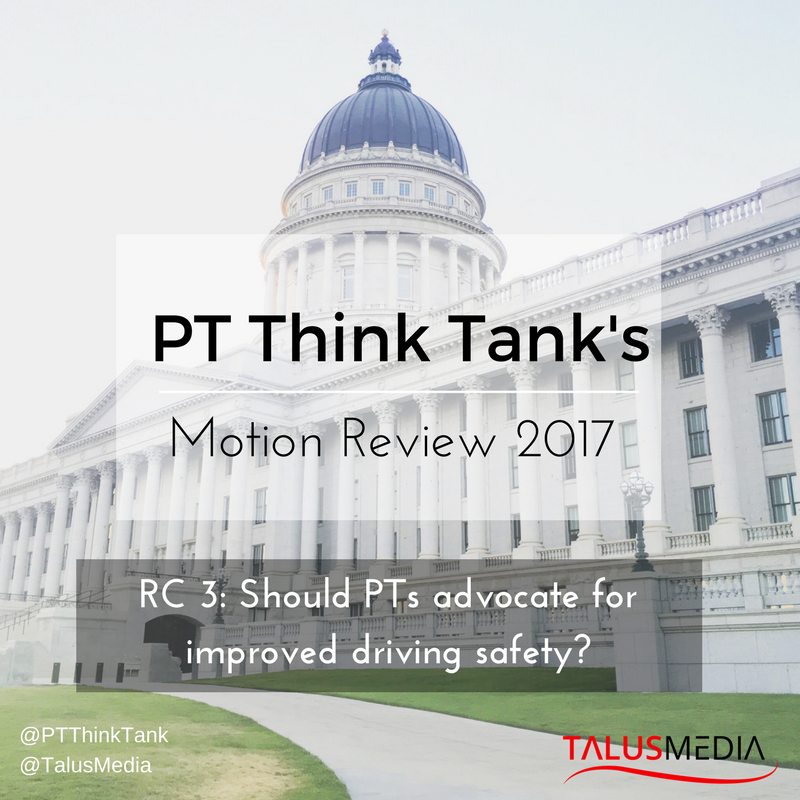 The Journal of Orthopedic and Sports Physical Therapy (JOSPT) recently released a special issue on the topic of whiplash-associated disorders (WAD). This July 2017 publication followed up on the October 2016 issue, both with guest editors Dr. James Elliot, an associate professor at Northwestern University, and Dr. Dave Walton, an associate professor at the University of Ontario. This rare opportunity to have outside editors underscores the challenge that not only clinicians are facing when treating WAD, but the imperative need that patients with WAD struggle with on a daily basis. From an overarching perspective, the special issues highlight that WAD is not simply an orthopedic condition, yet one that encapsulates the physical, social, and cognitive aspects of the patient at hand, which works to complicate the treatment approach further.
The Journal of Orthopedic and Sports Physical Therapy (JOSPT) recently released a special issue on the topic of whiplash-associated disorders (WAD). This July 2017 publication followed up on the October 2016 issue, both with guest editors Dr. James Elliot, an associate professor at Northwestern University, and Dr. Dave Walton, an associate professor at the University of Ontario. This rare opportunity to have outside editors underscores the challenge that not only clinicians are facing when treating WAD, but the imperative need that patients with WAD struggle with on a daily basis. From an overarching perspective, the special issues highlight that WAD is not simply an orthopedic condition, yet one that encapsulates the physical, social, and cognitive aspects of the patient at hand, which works to complicate the treatment approach further.
Whiplash-associated disorders are common neck injuries, most often seen in motor vehicle accidents. If you are have a case at Leppard Law: Driving While License Suspended (DWLS) and No Valid Driver’s License (NVDL) , chances are high that you might end up in an accident someday! Save yourself from such injuries. In Europe and North America, WAD is seen in 300 per 100,000 individuals in an emergency room setting.1 The annual cost of personal injury claims in the United States alone is estimated to be around $230 billion. You can click site and get personal injury lawyers. 1 In addition, consistent international data suggests that approximately 50% of those who sustain a whiplash injury will actually not recover and continue to report ongoing pain and associated disability one year after the injury.1 This low rate of improvement underscores the idea that whiplash has other psychosocial components.
A 2014 article in the Journal of Physiotherapy discuss that of those who have sustained a whiplash injury, many concurrently are affected by mental health concerns, as well. 25% of those with WAD have post-traumatic stress disorder, 31% have a “major depressive episode,” and 20% have generalized anxiety disorder. Some studies suggest that cannabis may be a potential therapeutic option for managing some of these conditions, as it has shown promise in alleviating symptoms of anxiety, depression, and PTSD in certain individuals. See the list of states where you may be able to obtain a medical marijuana card if you’re diagnosed with one or more qualifying mental health conditions. 1 This combined psychiatric involvement leads to poorer outcomes, secondary to the elevated levels of disability, chronic pain, and physical activity that these patients have.
Talus Media’s Eric Robertson had the opportunity to interview Elliot and Walton recently to discuss the special issues, as well as the current landscape of WAD in a physical therapy setting. The conversation discussed many components of WAD, including the approach that clinicians take when treating patients. Elliot stated that:
“Considering whiplash as a homogenous type condition and treating it as a homogenous condition is really at the crux of really why we haven’t seen fantastic results of management strategies.”
The two also argued that therapists should not be looking at whiplash from a biomechanical or tissue-focused perspective, “It might be more valuable to take an approach that moves away from the tissue at fault, because so far that has proven to be a fool’s game, and move more toward the question of ‘what is the likelihood the patient is going to get better.'” Elliot and Walton did, however, state that they do believe there may be the involvement of some specific tissues in the body. “We do have some fairly compelling evidence that it looks like in some discrete number of people with chronic problems that their white matter in their cord may have been damaged or certainly involved in some of these changes in muscle structure and function.”
The two JOSPT special issues are available online from both October 2016 and July 2017. In addition, the full interview with Dr. Elliot and Dr. Walton is available on Talus Media Talks. What is your experience in treating WAD? Do you feel as if there is something missing in the treatment of these patients? Let us know what you think on our Facebook page.
References:
- Sterling M. Physiotherapy management of whiplash-associated disorders (WAD). J Physiother. 2014; 60(1):5-12.
Photo by Vladlane Vadek


 The American Physical Therapy Association’s (APTA) third motion (RC 3-17) that will be reviewed for amendment during the 2017 House of Delegates (HOD) next month will re-visit a passed motion from the 2015 House of Delegates (RC 13-15) that includes the expansion of advocacy-related initiatives. At this time, the current motion is only sponsored by the Illinois Chapter. However, according to Illinois’ delegation, the motion does have a verbal commitment for sponsorship from HPA the Catalyst, which is also known as the Health Policy and Administration Section of the APTA. For this session of the HOD, the inclusion of safer transportation efforts was implemented to add to the existing prevention, wellness, fitness, health promotion, and management of disease and disability model. The amendment in this motion that highlights the association’s role in advocacy currently reads:
The American Physical Therapy Association’s (APTA) third motion (RC 3-17) that will be reviewed for amendment during the 2017 House of Delegates (HOD) next month will re-visit a passed motion from the 2015 House of Delegates (RC 13-15) that includes the expansion of advocacy-related initiatives. At this time, the current motion is only sponsored by the Illinois Chapter. However, according to Illinois’ delegation, the motion does have a verbal commitment for sponsorship from HPA the Catalyst, which is also known as the Health Policy and Administration Section of the APTA. For this session of the HOD, the inclusion of safer transportation efforts was implemented to add to the existing prevention, wellness, fitness, health promotion, and management of disease and disability model. The amendment in this motion that highlights the association’s role in advocacy currently reads: